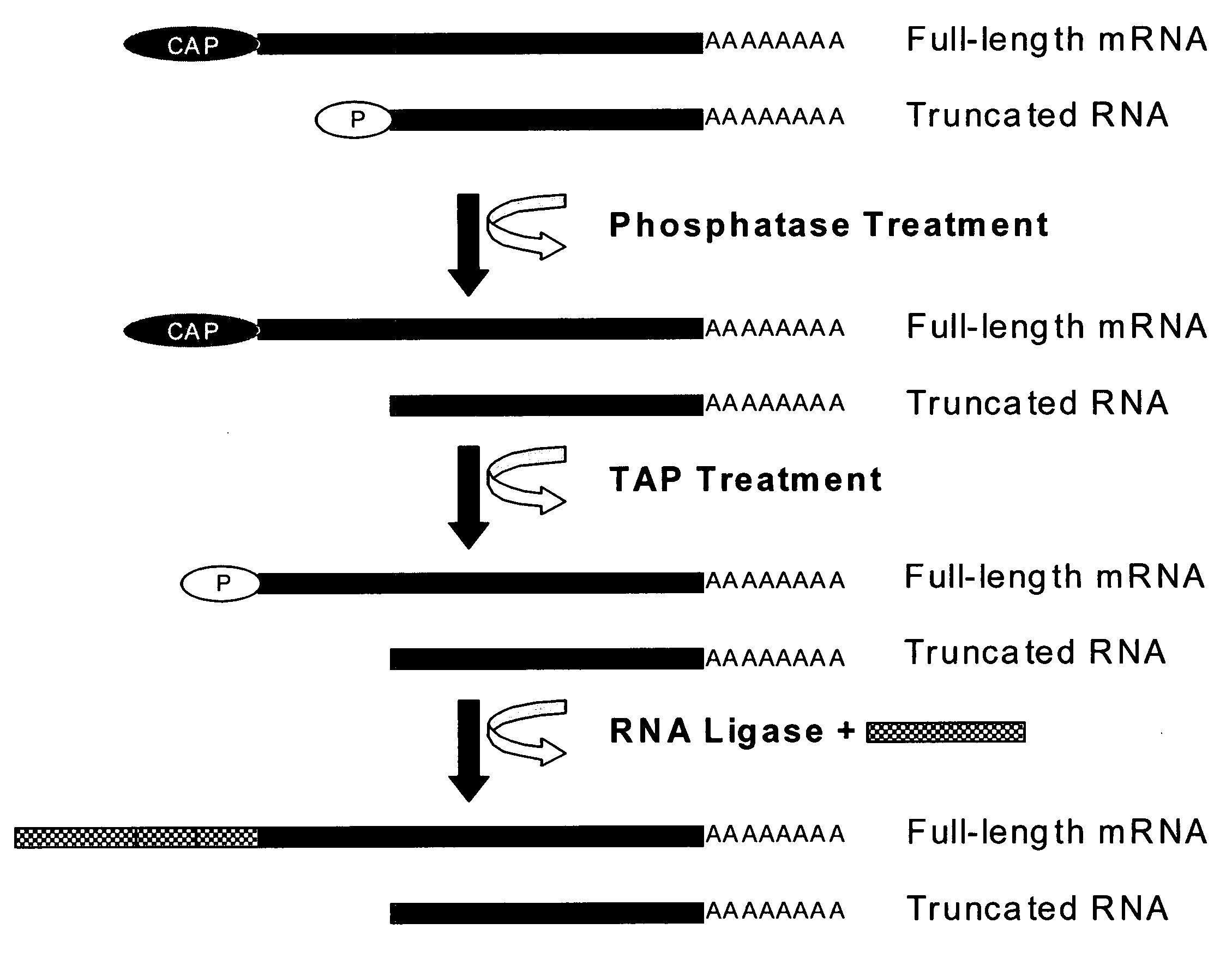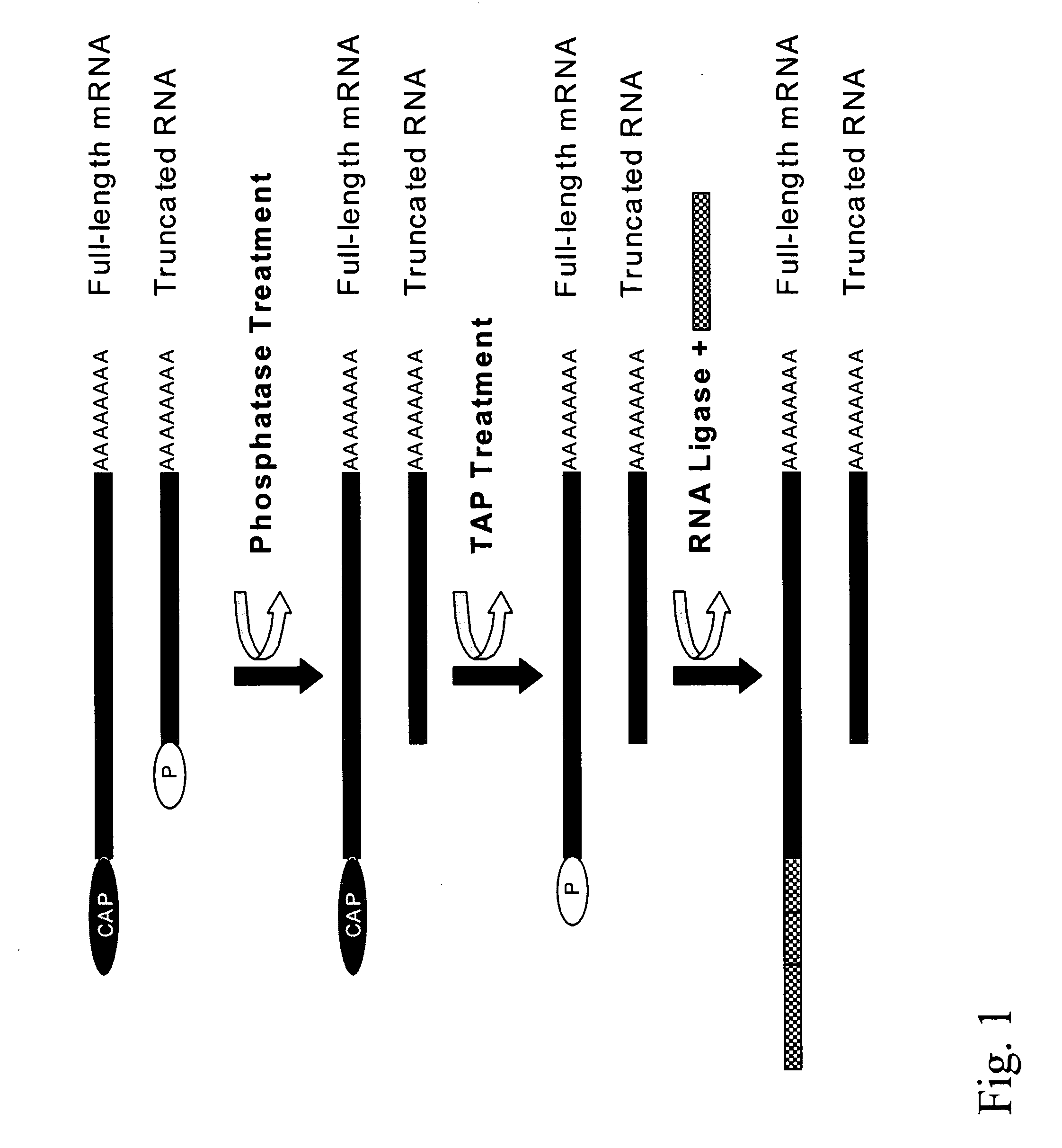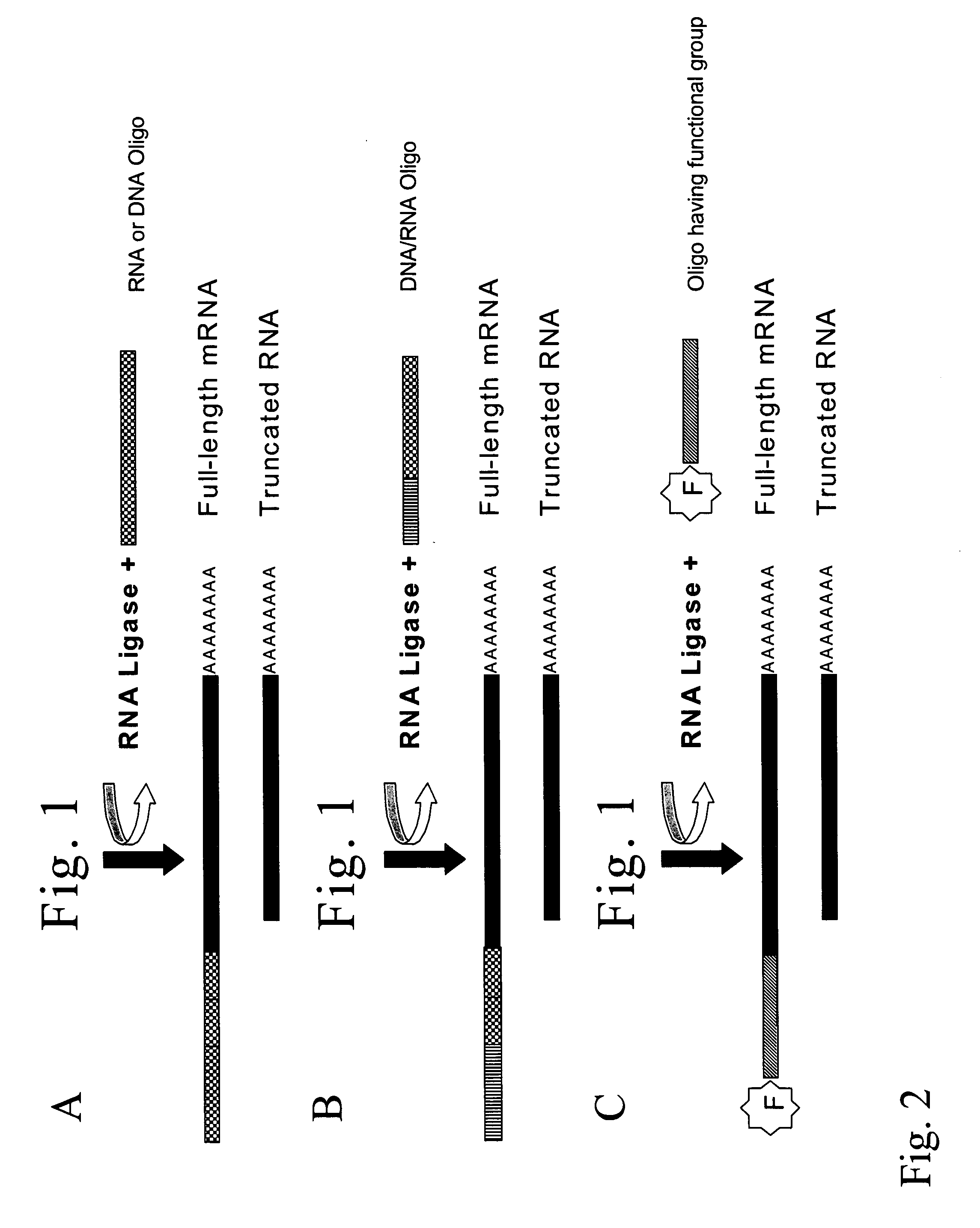Method for modifying RNAS and preparing DNAS from RNAS
- Summary
- Abstract
- Description
- Claims
- Application Information
AI Technical Summary
Benefits of technology
Problems solved by technology
Method used
Image
Examples
example 1
Isolation of RNA
[0091]To perform an example according to the invention, mRNA or total RNA samples were prepared by standard methods known to a person skilled in the art of molecular biology as, for example, given in more detail in Sambrook J. and Russuell D. W., Molecular Cloning, A Laboratory Manual, Cold Spring Harbor Laboratory Press, New York, 2001, hereby incorporated herein by reference. Furthermore, Carninci P. et al. (Biotechniques 33 (2002) 306-309, hereby incorporated herein by reference) describe a method for obtaining cytoplasmic mRNA fractions. Although the use of cytoplasmic RNA can be preferable, the invention is not limited to this method, and any other approach for the preparation of mRNA or total RNA should allow for the performance of the invention in a similar manner.
[0092]The preparation of mRNA from total RNA or cytoplasmic RNA is preferable, but not essential, to perform the invention as the use of total RNA can provide satisfying results in combination with t...
example 2
Preparation of a Library of 5′-Derivatized RNA Molecules
[0094]This example is a typical protocol for the derivatization of 5′-ends of RNA molecules with RNA oligonucleotides. All reactions were performed in a 500 microliters siliconised microtube and using a siliconized tip each time to avoid nucleic acids losses.
[0095]The RNA sample was at first depohosphorylated. The RNA (for instance 1 nanogram to 1 microgram) was added in a tube, together with 2 micrograms of glycogen, in a total volume of 5 microliter. The reaction buffer was 1 / 10 the common concentration, or 5 mM Bis-Tris-Propane-HCl, 0.1 mM MgCl2, 0.01 mM ZnCl2, pH 6.0 at 25° C. Glicogen was used to avoid attachment of RNA to the plastic during the operation. The sample was denatured at 65° C. for 5 minutes to expose the phosphate groups to be later removed, and after being held at 37° C. for 2 minutes the Anctartic phosphatase (New England Biolabs) was added (2.5 units). The sample was treated for 3 hours to overnight at 37°...
example 3
Activity Testing for Enzymes Used for the Preparation of Modified RNA
[0099]The activity of each enzyme used in Example 2 and their buffers were tested by:
[0100](A) Evaluation of the activity of the Antarctic Phosphatase (New England Biolabs). 5′ phosphorylated oligoribonucleotides were dephosophorylated 120 minutes at 37° C. in the following buffers. The oligoribonucleotides were subsequently radiolabelled with T4 Kinase and gamma-32P-ATP and analysed by PAGE. In absence of prior dephosphorylation, radiolabelling was impossible due to the 5′ phosphate.
[0101](B) Evaluation of the activity of the Tobacco Acid Pyrophosphatase (TAP) (Epicentre). gamma-32P-ATP was incubated with 2 U TAP in a reaction buffer. The TAP was heated 15 minutes before incubation with radioactive ATP.
[0102](C) For evaluation of the activity of the T4 RNA ligase (Fermentas) A radiolabelled oligoribonucleotide was incubated in presence of an unlabelled oligoribonucleotide. Ligation results in a shift of the electr...
PUM
| Property | Measurement | Unit |
|---|---|---|
| Length | aaaaa | aaaaa |
Abstract
Description
Claims
Application Information
 Login to View More
Login to View More - R&D
- Intellectual Property
- Life Sciences
- Materials
- Tech Scout
- Unparalleled Data Quality
- Higher Quality Content
- 60% Fewer Hallucinations
Browse by: Latest US Patents, China's latest patents, Technical Efficacy Thesaurus, Application Domain, Technology Topic, Popular Technical Reports.
© 2025 PatSnap. All rights reserved.Legal|Privacy policy|Modern Slavery Act Transparency Statement|Sitemap|About US| Contact US: help@patsnap.com



